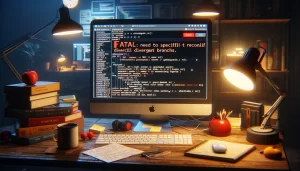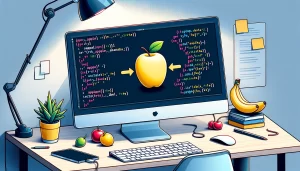In the world of software development, managing version control effectively is crucial to maintaining a smooth workflow and ensuring that changes are integrated seamlessly. Git, a popular version control system, allows teams to work concurrently on code, creating branches for features, fixes, or experiments. However, developers often encounter a challenge known as divergent branches, which can complicate the process of integrating changes. This blog will delve into how to reconcile divergent branches and explore best practices for handling this common issue in Git.
Understanding Divergent Branches
When you work with Git, divergent branches occur when two branches have drifted apart due to independent commits, making them no longer align directly. This situation is a typical challenge when multiple team members are working on different features or when changes in one part of the system impact another indirectly.
The error message “fatal: need to specify how to reconcile divergent branches.” is a common sight for many developers. It signals that Git cannot automatically merge the changes without further instructions, primarily because the diverging changes can’t be fast-forwarded.
Steps to Reconcile Divergent Branches
1. Understanding the Error
The error “you have divergent branches and need to specify” how to proceed is Git’s way of indicating that automatic merging is not possible without potential conflicts. This message often pops up during a git pull operation, where your local branch and the remote counterpart have diverged.
2. Configuring Git Pull Behavior
To address this issue, you can configure the pull behavior by setting the git config pull.rebase to either true, false, or interactive. Setting git config pull.rebase false maintains the default merging strategy, whereas setting it to true rewrites the branch history by rebasing the local changes on top of the fetched branch.
3. Resolving Conflicts Manually
When pulling without specifying how to reconcile divergent branches results in a conflict, you’ll need to manually resolve these conflicts. Open the files listed by Git, and look for the typical conflict markers that indicate the differing changes. Decide how to integrate these changes effectively, preserving the functionality and integrity of the code.
4. Using Git Merge
Another approach is to use git merge, which is particularly useful if you prefer to create a merge commit. This command will merge the specified branch into your current branch, which can be helpful if you are trying to integrate a feature branch back into the main or develop branch.
5. Rebasing Branches
Rebasing is a powerful alternative to merging. By running git rebase, you can linearly apply changes from one branch onto another, which often results in a cleaner, more straightforward history. This method is particularly effective when you are preparing to integrate a feature branch as it makes the history of changes easier to understand.
Best Practices for Handling Divergent Branches
- Regularly Pull Changes: To minimize the risk of branches becoming too divergent, regularly pull changes from the remote repository and integrate them. This practice helps reduce the complexity of merging branches later.
- Communicate with Team Members: If you’re working in a team environment, communication is key. Ensure that all members are aware of the changes being made in different branches to avoid significant divergences.
- Use Feature Toggles: Instead of creating long-running branches, consider using feature toggles. This approach allows you to merge changes into the main codebase without affecting the product’s functionality until the feature is ready.
- Implement Continuous Integration (CI): CI systems can help by automatically testing and merging branches, ensuring that integration problems are caught and addressed early.
Conclusion
Handling divergent branches in Git requires a clear understanding of how to reconcile divergent branches and the tools at your disposal. Whether you choose to merge or rebase, the key is to maintain clear communication and regular updates within your team. By following these practices, you can manage divergent branches effectively, ensuring a smooth and efficient development process.
You may find some of our other articles interesting
How to Convert a List to String in Python: All you need to know with examples
Create SQL Temp Table: Mastering Temporary Tables in SQL
How to Run a PowerShell Script: Easy Steps 2024
Transforming Development Processes: 6 Ways ChatGPT Can Help Developers






























